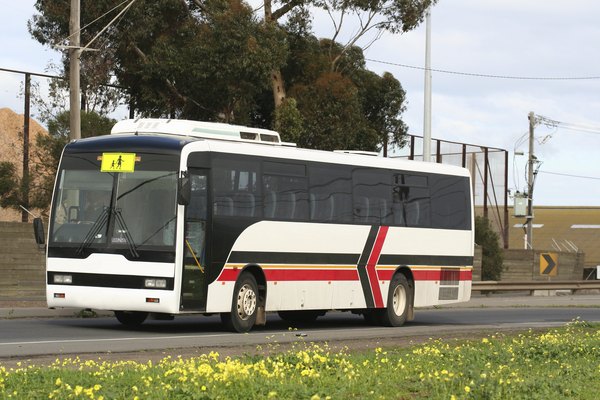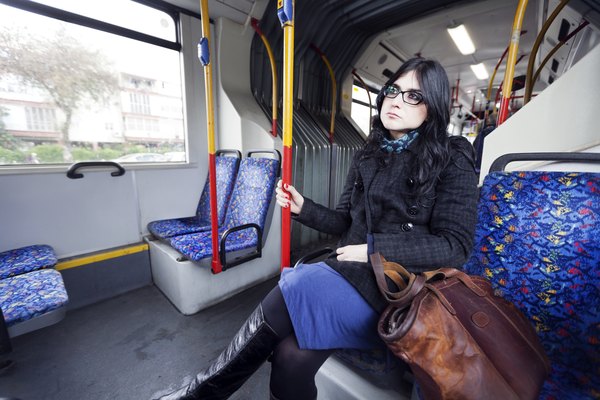What Is the Standard Size for a City Bus?
by Angela RyczkowskiUpdated July 06, 2023
Buses, often considered the "workhorses" of urban transportation, play a vital role in public transit systems around the world. While designs, lengths, and capacities may vary, there are recognized standards for transit bus dimensions. This article delves into the various types of buses, their sizes, and their significance in providing efficient public transportation services.
Standard City Bus

The standard city bus, commonly used for commuter transit, adheres to specific dimensions. These buses typically measure approximately 14 meters (45 feet) in length, ensuring ample space to accommodate a considerable number of passengers. With a width ranging between 95 and 105 inches (8 to 9 feet), standard city buses efficiently navigate through urban streets, bus routes, and intersections, ensuring smooth bus service along designated routes.
Double-Decker Buses:
In some cities, double-decker buses are an iconic sight, offering a unique and spacious transport experience. These buses feature an additional level for seating, maximizing their capacity without compromising road space. While their dimensions may vary, double-decker buses are often longer than standard buses and can cater to longer-distance routes, particularly in metropolitan areas like New York City.
Articulated Buses

Articulated buses, comprising two sections held together by a pivoting joint, are popular for their enhanced passenger capacity. With a length of around 18 meters (60 feet), these buses can accommodate up to 120 passengers comfortably. Articulated buses are frequently employed in high-demand areas and along bus routes with heavy commuter traffic during rush hour.
Bi-Articulated Buses

Taking the concept of articulated buses further, bi-articulated buses feature three sections, enabling even greater passenger capacity. These extended buses can reach lengths of up to 25 meters, offering room for over 200 passengers. Bi-articulated buses are commonly used in densely populated regions and are ideal for catering to larger commuter volumes efficiently.
Minibuses and Shuttle Buses:
In addition to standard and articulated buses, smaller vehicles known as minibuses or shuttle buses are used to serve specific areas, such as university campuses, airports, and smaller communities. These compact buses, with reduced seating capacity compared to their larger counterparts, provide localized and convenient public transportation options.
Accessibility and ADA Compliance:
To ensure inclusive transportation for all, buses adhere to guidelines set forth by the Americans with Disabilities Act (ADA). Buses equipped with wheelchair lifts, low-floor designs, and forward-facing seating arrangements ensure accessibility for individuals with mobility challenges. These features allow individuals with disabilities to comfortably and safely utilize public transit services.
Seating Capacity and Comfort:
Bus designs focus on optimizing seating capacity while maintaining passenger comfort. Different types of buses offer varied seating arrangements, accommodating diverse travel needs and preferences. From standard single-deck buses to double-decker configurations, seating layouts are carefully designed to balance capacity, convenience, and a comfortable journey for passengers.
Environmental Considerations and Emissions:
As sustainable transportation gains importance, bus manufacturers and transit agencies are actively exploring emission-reducing technologies. Implementing low-emission buses and transitioning to electric or hybrid-powered buses contribute to cleaner air quality and reduced carbon footprints in urban areas.
Buses are indispensable in the realm of public transportation, playing a pivotal role in efficiently connecting commuters across the world. From standard-sized city buses to double-decker and articulated buses, as well as minibuses and shuttle buses, diverse bus designs cater to the specific needs of different transit systems. By adhering to standards like those outlined by the ADA, public transportation becomes more accessible and inclusive for individuals with disabilities. With advancements in bus technology and a growing emphasis on sustainability, public transit continues to evolve, aiming to provide comfortable, efficient, and environmentally friendly transportation options for all.
Writer Bio
Angela Ryczkowski is a professional writer who has served as a greenhouse manager and certified wildland firefighter. She holds a Bachelor of Arts in urban and regional studies.







